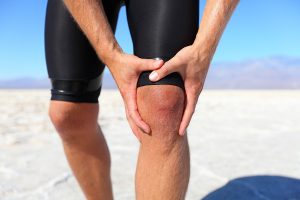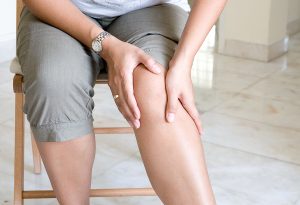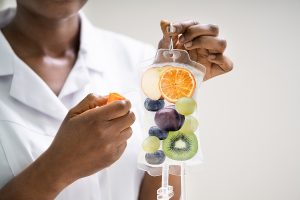No parent wants to see their child hurting. Injuries are incredibly stressful, as you don’t want to scare your child by showing panic, but you’re scared because your child is hurting and needs immediate medical care.
Injuries that involve bones, such as a fracture or dislocation, are especially alarming. A child’s bones are still growing, and growth plate injuries need to heal correctly to prevent long-term issues.
Learn more about growth plates and injuries to them. If your child is injured playing sports at school or with friends in Fresno, the more you know, the better it is for your child’s healing process.
Growth Plates: The Basics
Before you can fully understand the problem with growth plate injuries, it’s important to understand what growth plates are. They are a section of tissue located at the ends of long bones in children and teens. This cartilage impacts the shape and length of growing bones.
Every long bone in a child’s body has at least two growth plates. Bones that have growth plates include:
- Arm bones (radius and ulna)
- Finger and hand bones (metacarpals)
- Lower leg bones (fibula and tibia)
- Thigh bones (femur)
- Toe and foot bones (metatarsals)
Growth plates close sometime in a child’s teen years, usually between 13 and 15 for girls and 15 to 17 for boys. It’s impossible to know exactly when they will close as every child reaches puberty at a different rate.
Boys are more likely to experience growth rate injuries because of their age at maturity. They’re also more likely to occur in children and teens who participate in competitive sports where there’s a higher risk of hits, falls, or repetitive motions. Basketball, football, gymnastics, skateboarding, and skiing are some of the sports where growth plate injuries are most common.
Growth plates can be weaker than tendons and ligaments, so it’s important to protect this cartilage. Until the tissue “closes,” bones can continue to grow. Growth plate closure is the final step where the area solidifies.
The Impact of Growth Plate Injuries
Growth plate injuries are of specific concern because this tissue impacts bone growth. A damaged growth plate can lead to permanent issues like these.
- Crooked growth
- Deformities
- Joint problems
- Muscle imbalances
- Shorter limbs
- Uneven bone growth
Most growth plate injuries heal well, provided the child rests the area and avoids overuse while the injury heals. That’s why it’s important to work with an expert in pediatric orthopedics and sports injuries.
Types of Growth Plate Injuries
Rapid spurts of growth are one of the most common periods when growth plate injuries occur. They can happen during a car accident, a fall, or a sports practice or game. There are four main areas where long bone injuries occur.
- Diaphysis: The shaft of the bone between growth plates.
- Epiphysis: End of a bone nearest the joint
- Metaphysis: The area between a growth plate and the start of the shaft
- Physis: The growth plate itself
When a growth plate injury happens, the Salter-Harris classification system is used to rate the severity.
- Type I: The break goes straight across the growth plate. (Physis only)
- Type II: The break goes across the growth plate and into the bone shaft. ((Physis and metaphysis)
- Type III: The break goes across the growth plate and into the joint. (Epiphysis and physis separate from the metaphysis.)
- Type IV: The break goes through the growth plate, bone, and into the joint. (Physis, metaphysis, and epiphysis)
- Type V: The growth plate is crushed. (Physis only)
Of these different types of growth plate injuries, Type I and Type II offer the best chances of a full recovery. Type III is a bit trickier as the joint must be stabilized to ensure alignment. Type IV is severe and usually ends up with complications to overcome.
Type V is the worst injury to occur. It’s not common, but if it happens, the growth plate closes early. That leads to shortened bone growth.
How to Recognize Growth Plate Injuries
It can be impossible to tell the difference between a standard sprain or fracture and a growth plate injury. That’s why we recommend seeing a sports and orthopedics specialist to have the injury properly diagnosed through X-rays or scans.
Signs of a growth plate injury include:
- Bruising that’s focused around the joint.
- Inability to bear any weight on the affected limb or area or use a joint.
- Persistent pain in an area where you expect a bone to end.
- Swelling and warmth around a joint or area where the bone was injured
- Visible changes in the appearance of the bone, such as misalignment or a bend that was never there before.
Depending on your child’s age, it may be hard for them to tell you exactly what’s wrong. You know your child, so if something seems wrong, trust your gut. It’s better to see a doctor and learn that it’s no more than a muscle strain than to ignore a possible bone fracture or growth plate injury.
Treatment Options for Growth Plate Injuries
If a doctor diagnoses a growth plate injury, Treatment options depend on the severity. With most injuries, immobilization with a sling, cast, or splint is necessary.
Displaced bones need to be aligned first. This is done by hand (closed reduction) or surgery, where pins are surgically inserted to hold the bones in place (open reduction). Your child will have exercises to do at home to improve the range of motion and strength.
Medical Care Is Essential
If you suspect your child has a growth plate injury, see a doctor in Fresno. A specialist in orthopedics can diagnose the problem and discuss the best treatment options. Follow-up appointments and specialty care are often recommended. Make sure your child attends each appointment.
After an injury to a growth plate, it’s important that healing is monitored. Juvenile sports injuries, especially growth plate injuries, tend to heal well, but additional problems like reinjury must be caught ASAP.
In the meantime, do what you can to keep your child from reinjury and take steps to protect growing bones. A few things help with that.







